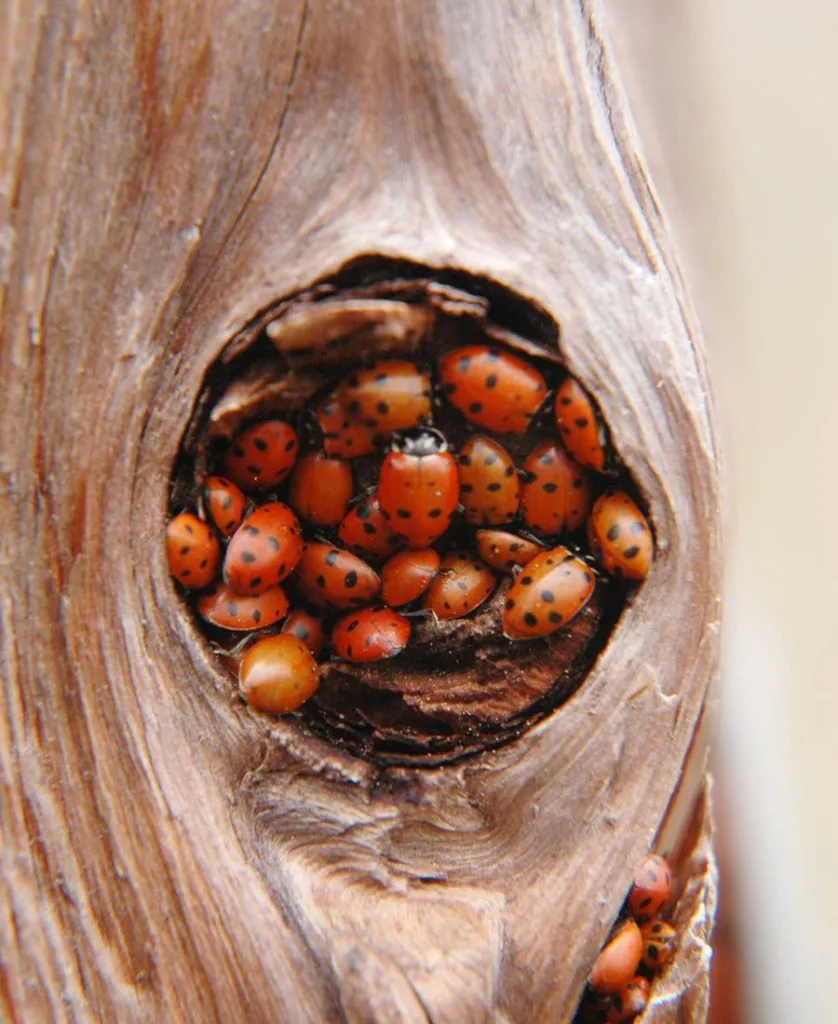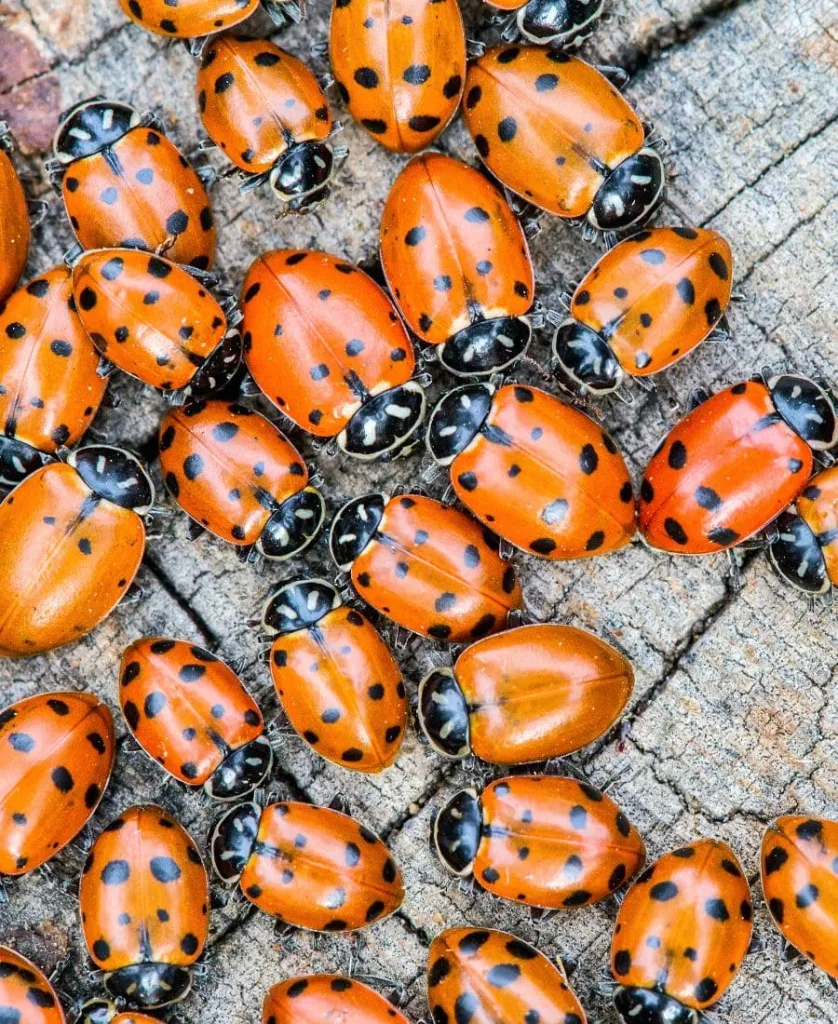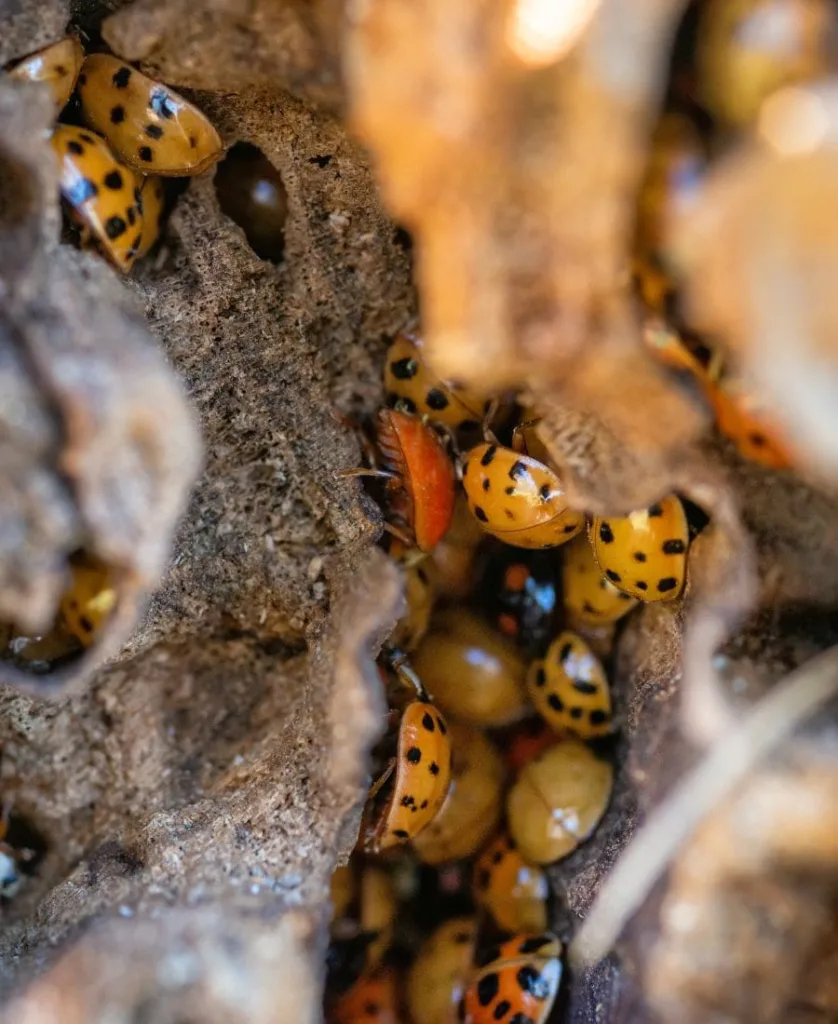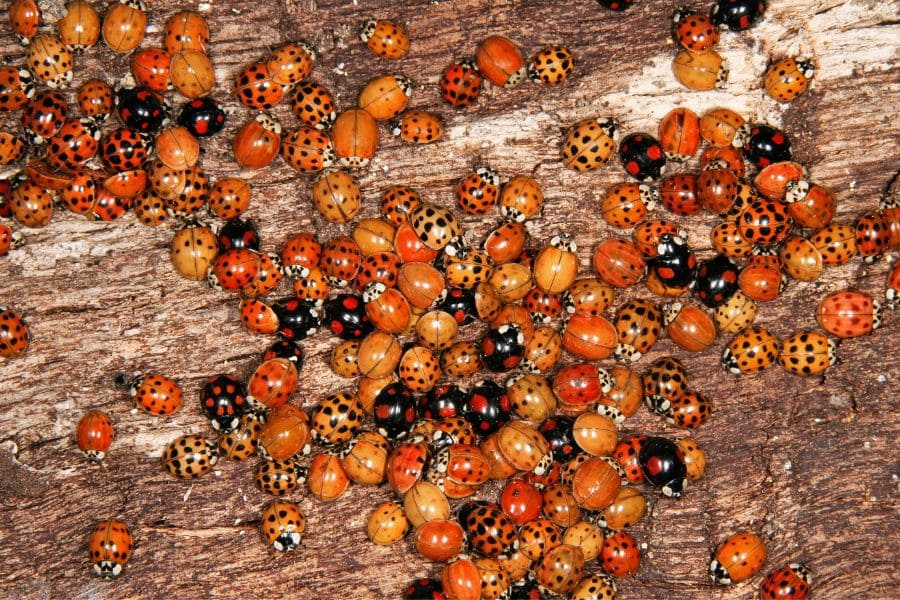Ladybugs possess a spiritual resonance that has captivated human imagination for centuries.
These small, often brightly colored beetles are not just appreciated for their aesthetic appeal but also for their symbolic significance in various cultures.
Commonly associated with good luck and protection, ladybugs are considered auspicious, and their appearance is frequently interpreted as a positive omen.
A swarm of ladybugs, in particular, amplifies this spiritual messaging, serving as a potent symbol of the interconnectedness between the physical world and the metaphysical one.
The spiritual interpretations of ladybugs are diverse, yet there are reoccurring themes across different traditions.
In many societies, ladybugs are seen as messengers of change and transformation, heralding periods of personal growth and development.
Their life cycles, from larva to beetle, embody the concept of metamorphosis, reinforcing the belief in their ability to inspire evolutionary spiritual journeys.
Observing a ladybug or a group of them may prompt individuals to consider their life’s trajectory and the transformations they are undergoing or wish to pursue.
Apart from their transformative qualities, ladybugs are often thought to bring a variety of other spiritual messages.
They are associated with the idea of protection, as ladybugs naturally protect plants by feeding on pests.
This quality has been spiritualized, suggesting that they offer a form of shielding against negative influences.
Moreover, the spots on a ladybug’s back are said to represent abundance and the nurturing of personal dreams and goals, encouraging belief in one’s pursuits and the hard work that goes into achieving them.
Cultural Significance and Symbolism

In exploring the cultural significance and symbolism of ladybugs, it becomes apparent that they are potent symbols of good fortune, prosperity, and protection across a broad range of cultures.
Their vibrant colors and benign presence have given them a cherished place in spirituality and folklore.
Read too: Yellow Ladybug Meaning: Sign Of Bad Omen?
History and Folklore
Ladybugs have been venerated throughout history, with their presence often interwoven with spiritual meaning and religious symbolism.
In Christianity, the red ladybug is sometimes associated with the Virgin Mary, earning them the name “beetle of Our Lady.”
This ties their vibrant red color to the cloak of the Virgin Mary, further imbuing ladybugs with a divine significance.
In Asian cultures, ladybugs are considered lucky, with their arrival signaling good weather or a good harvest.
Native tribes and various cultures around the world also perceive them as omens of positive energy and prosperity.
Ladybug Variations and Meanings
Different colors of ladybugs carry specific meanings and interpretations. Here’s a brief look at the symbolism associated with various ladybug colors:
- Red Ladybug: Most common and associated with traditional symbolism of love and protection.
- Orange Ladybug: Related to creativity and energetic success.
- Yellow Ladybug: Often symbolizes new beginnings and happiness.
- Black Ladybug: While rarer, they can signify rebirth or renewal.
- White Ladybug: Extremely rare, possibly denoting purity or the presence of good spirits.
- Green Ladybug: Not a traditional color and may represent natural abundance or environmental well-being.
Leveraging Ladybug Luck
Many cultures embrace the belief that ladybugs bring good luck, often seeing their arrival as a message or omen indicating that fortune is on the side of the beholder.
Encounters with ladybugs are considered spiritual interactions, with each spot on their backs representing a month of good luck.
The vibrancy of their appearance and their non-threatening disposition enhance their role as carriers of positive omens, making them welcome visitors in gardens and homes alike.
Spiritual Interpretations and Beliefs

The spiritual significance of ladybugs is intricate, often associated with concepts such as good fortune, transformation, and inner peace.
These small insects carry messages within various cultural beliefs and personal encounters, highlighting their roles as spiritual symbols.
Ladybug as a Totem/Spirit Animal
Those who consider the ladybug their totem or spirit animal often regard it as a beacon of positivity and joy. A ladybug totem animal symbolizes:
- Protection: Serving as a guardian against negative energies.
- Healing: Promoting recovery from emotional or physical issues.
- Change and Transformation: Encouraging growth and transition to new phases of life.
If you are enjoying reading this, you will definitely enjoy reading What Does It Mean When A Ladybug Lands On You?
Encounters and Sightings
An encounter with a ladybug is not merely an event; it’s perceived as a sign or gift. Sightings are often interpreted as messages relating to:
- Love and Relationships: Ladybugs can signify new connections or harmony in existing bonds.
- Good News: Their presence is sometimes believed to precede the arrival of encouraging information.
- Prosperity and Good Health: Seeing a ladybug is frequently seen as a harbinger of well-being across various facets of life.
Interpreting Ladybug Messages
Interpreting what a ladybug symbolizes requires awareness and patience. One should pay attention to the emotions or circumstances during the sighting for clues such as:
- Inner Peace: A sense of calm or reassurance following a ladybug’s appearance may reflect its spiritual meaning.
- Communication: Is the ladybug prompting a need for better engagement or openness in relationships? Consider the context of recent dreams or conversations.
- Joy and Positivity: Ladybugs can be reminders to embrace happiness and maintain an optimistic outlook despite challenges.
Life Stages and Transformation
In the context of spirituality, ladybugs symbolize significant life stages and the transformative process akin to their own biological metamorphosis.
Metamorphosis and Growth
Ladybugs undergo a dramatic metamorphosis in their lifecycle, which mirrors the concept of personal transformation and growth.
This process begins at larval stage, representing the formative phase of life, where much change is unseen.
As they progress to the pupal stage, it symbolizes a time of introspection and renewal, finally culminating in the adult ladybug, which signifies rebirth and the unveiling of the authentic self.
Ladybug Lifecycle and Personal Change
The lifecycle of a ladybug is a powerful metaphor for personal change. It comprises four distinct stages:
- Egg: A phase of potential and new beginnings.
- Larva: Growth amidst challenges.
- Pupa: Reflection, death of the old self, and preparation for transformation.
- Adult: Freedom, rebirth, and moving forward with bright colors that reflect a vibrant essence.
This cycle resonates with the spiritual journey of shedding past patterns and embracing new beginnings, paralleling the ladybug’s transformation from a creature bound to the earth to one that can freely explore the skies.
Before you leave, read Ladybug With No Spots Meaning: 9 Spiritual Warnings
Interactions with Ladybugs

Ladybugs, often seen as harbingers of good luck and prosperity, are admired for their contributions to both home environments and natural ecosystems.
They play significant roles in the context of protection, vitality, and maintaining balance within their habitats.
At Home and in the Garden
In residential spaces, ladybugs are welcomed for their pest control abilities, as they feast on aphids and other harmful insects that can destroy plants and gardens.
Homeowners and gardeners express gratitude for these beetles, recognizing their positive impact on plant health and by extension, fertility of the garden.
The presence of ladybugs often correlates with a healthy garden environment, full of vitality and balance, as they contribute to a natural pest management system.
- Protection: Ladybugs protect plants by eating pests which can damage crops.
- Love and Relationships: In folklore, encountering a ladybug is sometimes associated with forthcoming love or an improvement in relationship dynamics.
- Gratitude: Gardeners and farmers are generally thankful for the role ladybugs play in maintaining the health of their plants.
Ladybugs in Nature and the Ecosystem
In wider ecosystems, ladybugs exhibit an innate sense of freedom as they navigate through different plants, contributing to the diversity and balance of nature.
They are essential in maintaining the harmony of food chains by controlling pest populations, thus indirectly supporting various other forms of life.
Environmentalists emphasize the importance of ladybugs for their role in the overall health and vitality of natural habitats.
- Nature and Balance: Ladybugs are crucial in keeping a natural balance within ecosystems.
- Vitality: The insect’s activity in nature ensures the continuing vitality of various plant and animal species.
- Inner Child and Harmony: The joy and wonder ladybugs inspire, especially in children, reflect an appreciation for nature’s intricate harmony.








